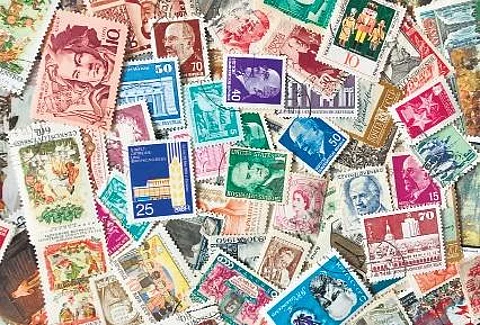

KOCHI: Once upon an era, the mailman was the lifeline to the world beyond. Destinies were often nonchalantly ferried in his postal bag. His arrival could soothe a mother’s worry, announce a loss, welcome a birth, forge bonds and separate souls.
Poetry flowed out of those carefully sealed envelopes at times, sending many young girls’ hearts fluttering. It may all seem like a fairytale today when communication is at the click of a button; so instant that love and loss do not have time for afterthoughts.
On July 1, the world celebrated Postal Workers Day. Let’s also take a moment to thank them for all the art they carried on those postal covers into our daily lives in the form of humble postage stamps. Beautifully illustrated and telling many tales, they carried their visual messages from sender to receiver like true ambassadors of nations.
The first postal stamp in India was released in 1852 and was circular, with the British East India Company’s mark as the emblem at the centre. Independent India however released the first stamp depicting the Indian flag, in November 1947.
CR Pakrashi, who passed away in 2016 at the age of 95, has designed some of the most brilliant postage stamps of India in a career spanning six decades from 1955 to 2008. His journey started with taking up a call inviting postage stamp designs to commemorate the 2500th birth anniversary of Buddha in 1955. His design of a symbolic Bodhi tree with perfect shading and light effects was selected and thus began his long association with the Postal Department. Some of his most outstanding works are the Jai Bangla stamp from 1973 on the occasion of the first parliament session of Bangladesh, the 1982 stamp depicting railway mail services and many such memorable ones.
Not all stamps in the world are painstakingly crafted on a drawing board. Austria issued stamps that were made of old uniforms — shredded, soaked in water and made into a pulp to make the rag paper for the stamp. Austria also issued the first glass stamp featuring a reverse glass painting of the Pieta or Mother Mary weeping over the dead body of Jesus, Portugal came up with the world’s first stamp with LED lights that illuminated the Christmas star.
The lights were activated through contact with a smartphone. In 1918, the acute shortage of paper after the First World War led to Latvia printing stamps on the reverse of discarded papers and maps. And this takes the cake — in 1973, Bhutan came up with talking stamps! Vinyl records containing Bhutanese folk songs and histories could be played and used as postage stamps by peeling off the backing paper and sticking them on an envelope. Trust Bhutan to also make the Roses stamp series, scented with the smell of the rose on paper.
It is no mean task to visually document history in such miniscule forms. In these email and chat option times, these exquisite works of art may seem ancient and redundant, but our postage stamps will always remain an ode to the milestones in our history.